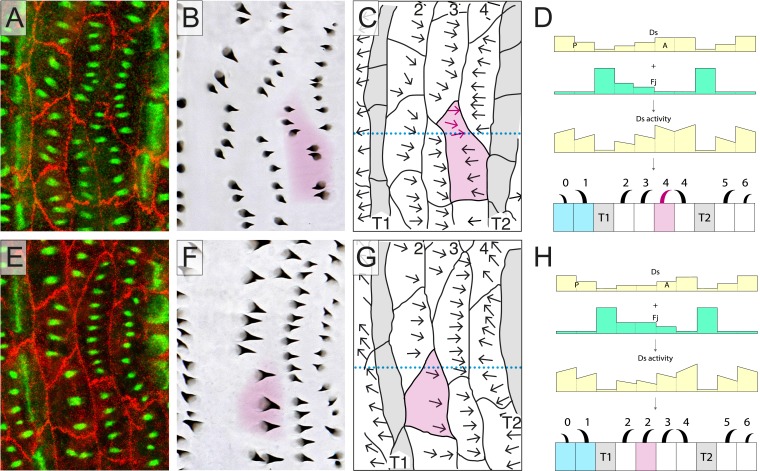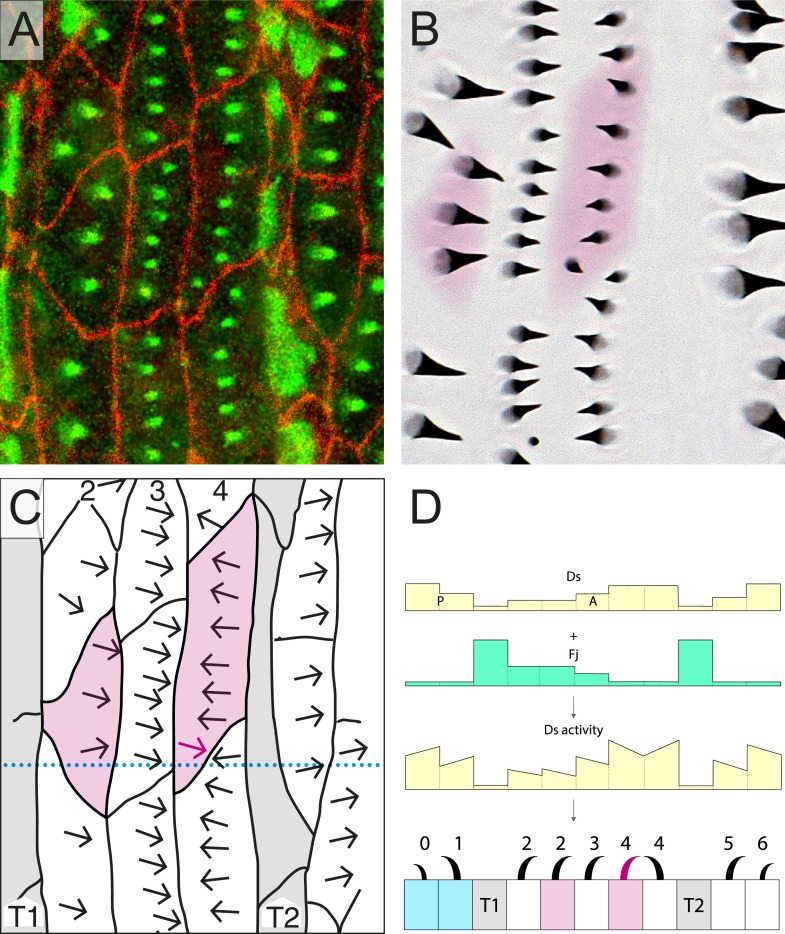Figure 2. Atypical cells.
(A–D) One atypical and multipolar cell, largely in row 4, is shown, in B–D (shaded in magenta). The transects shown as dotted lines in C and G are illustrated in D and H with the presumed amounts of Ds and Fj as well as the presumed activity of Ds. (E–H) One atypical cell of row 2 is shown; labelling as in other figures. See also Figure 2—figure supplement 1.


